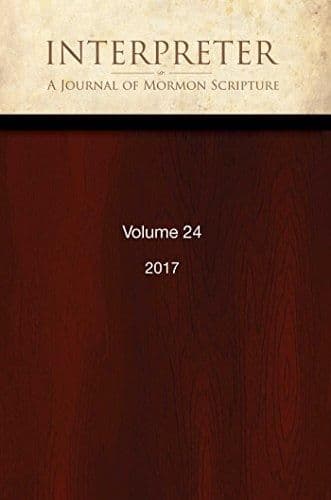Journal
Alma — Young Man, Hidden Prophet
Title
Alma — Young Man, Hidden Prophet
Publication Type
Journal Article
Year of Publication
2016
Authors
Bowen, Matthew L. (Primary)
Journal
Interpreter: A Journal of Latter-day Saint Faith and Scholarship
Pagination
343-353
Volume
19
Abstract
The biographical introduction of Alma the Elder into the Book of Mormon narrative (Mosiah 17:2) also introduces the name Alma into the text for the first time, this in close juxtaposition with a description of Alma as a “young man.” The best explanation for the name Alma is that it derives from the Semitic term ǵlm (Hebrew ʿelem), “young man,” “youth,” “lad.” This suggests the strong probability of an intentional wordplay on the name Alma in the Book of Mormon’s underlying text: Alma became “[God’s] young man” or “servant.” Additional lexical connections between Mosiah 17:2 and Mosiah 14:1 (quoting Isaiah 53:1) suggest that Abinadi identified Alma as the one “to whom” or “upon whom” (ʿal-mî) the Lord was “reveal[ing]” his arm as Abinadi’s prophetic successor. Alma began his prophetic succession when he “believed” Abinadi’s report and pled with King Noah for Abinadi’s life. Forced to flee, Alma began his prophetic ministry “hidden” and “concealed” while writing the words of Abinadi and teaching them “privately.” The narrative’s dramatic emphasis on this aspect of Alma’s life suggests an additional thread of wordplay that exploits the homonymy between Alma and the Hebrew root *ʿlm, forms of which mean “to hide,” “conceal,” “be hidden,” “be concealed.” The richness of the wordplay and allusion revolving around Alma’s name in Mosiah 17–18 accentuates his importance as a prophetic figure and founder of the later Nephite church. Moreover, it suggests that Alma’s name was appropriate given the details of his life and that he lived up to the positive connotations latent in his name.
Subject Keywords
Bibliographic Citation
Terms of use
Items in the BMC Archive are made publicly available for non-commercial, private use. Inclusion within the BMC Archive does not imply endorsement. Items do not represent the official views of The Church of Jesus Christ of Latter-day Saints or of Book of Mormon Central.
